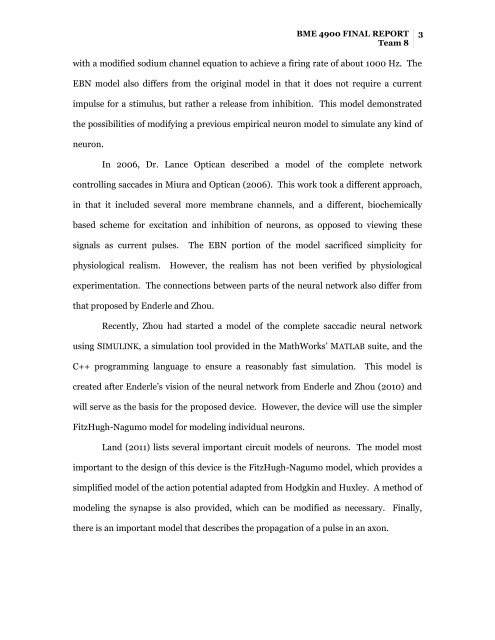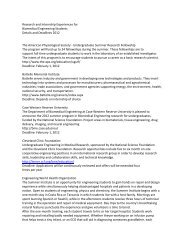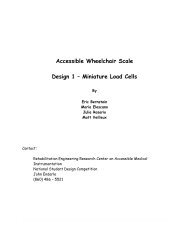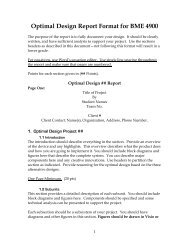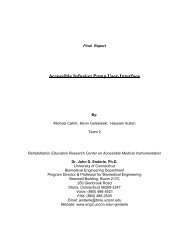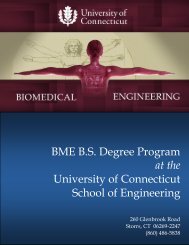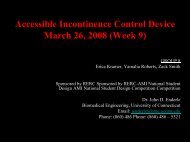BME 4900 Final Report - Biomedical Engineering - University of ...
BME 4900 Final Report - Biomedical Engineering - University of ...
BME 4900 Final Report - Biomedical Engineering - University of ...
You also want an ePaper? Increase the reach of your titles
YUMPU automatically turns print PDFs into web optimized ePapers that Google loves.
<strong>BME</strong> <strong>4900</strong> FINAL REPORT 3Team 8with a modified sodium channel equation to achieve a firing rate <strong>of</strong> about 1000 Hz. TheEBN model also differs from the original model in that it does not require a currentimpulse for a stimulus, but rather a release from inhibition. This model demonstratedthe possibilities <strong>of</strong> modifying a previous empirical neuron model to simulate any kind <strong>of</strong>neuron.In 2006, Dr. Lance Optican described a model <strong>of</strong> the complete networkcontrolling saccades in Miura and Optican (2006). This work took a different approach,in that it included several more membrane channels, and a different, biochemicallybased scheme for excitation and inhibition <strong>of</strong> neurons, as opposed to viewing thesesignals as current pulses.The EBN portion <strong>of</strong> the model sacrificed simplicity forphysiological realism.However, the realism has not been verified by physiologicalexperimentation. The connections between parts <strong>of</strong> the neural network also differ fromthat proposed by Enderle and Zhou.Recently, Zhou had started a model <strong>of</strong> the complete saccadic neural networkusing SIMULINK, a simulation tool provided in the MathWorks’ MATLAB suite, and theC++ programming language to ensure a reasonably fast simulation.This model iscreated after Enderle’s vision <strong>of</strong> the neural network from Enderle and Zhou (2010) andwill serve as the basis for the proposed device. However, the device will use the simplerFitzHugh-Nagumo model for modeling individual neurons.Land (2011) lists several important circuit models <strong>of</strong> neurons. The model mostimportant to the design <strong>of</strong> this device is the FitzHugh-Nagumo model, which provides asimplified model <strong>of</strong> the action potential adapted from Hodgkin and Huxley. A method <strong>of</strong>modeling the synapse is also provided, which can be modified as necessary. <strong>Final</strong>ly,there is an important model that describes the propagation <strong>of</strong> a pulse in an axon.


